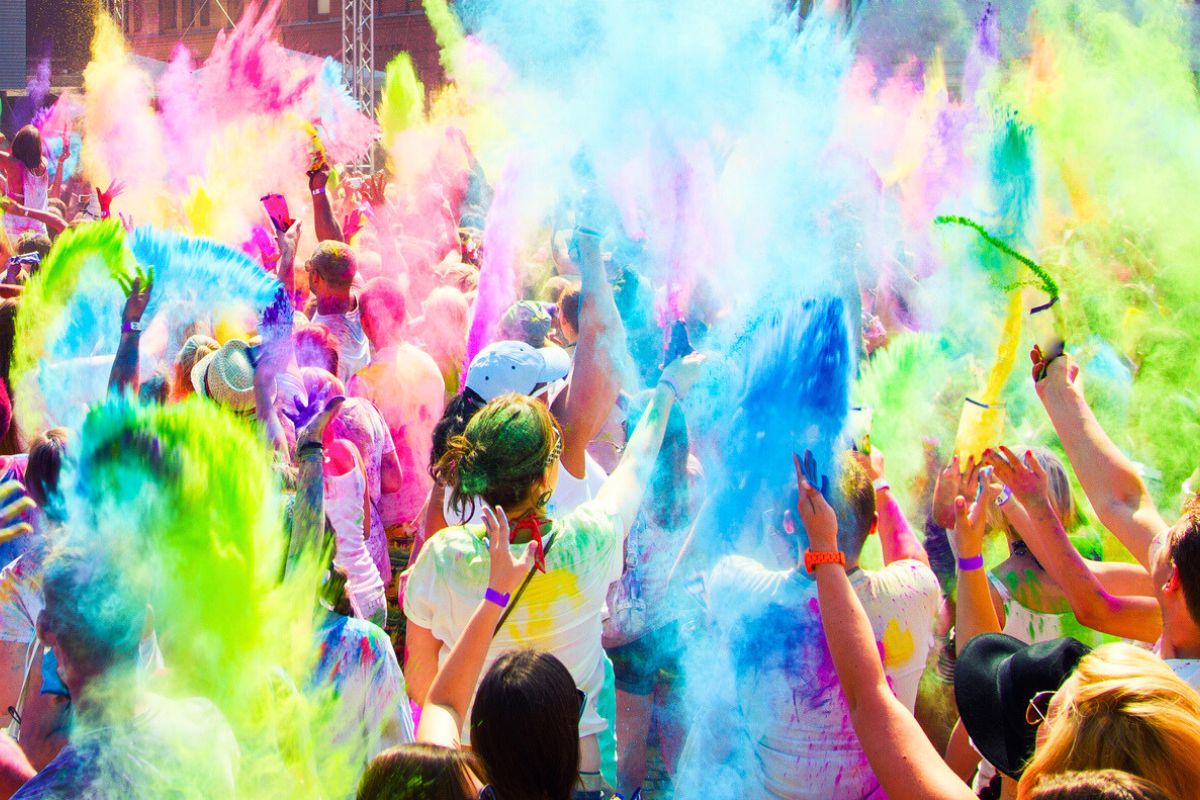Holi, also known as the “Festival of Colors” and the “Festival of Spring”, is a vibrant and joyous celebration observed in India and by Hindu communities worldwide.
It’s a two-day event that marks the arrival of spring, the triumph of good over evil, and the beginning of a bountiful harvest season. Here’s a deeper look into this fascinating festival:
When is Holi Celebrated?
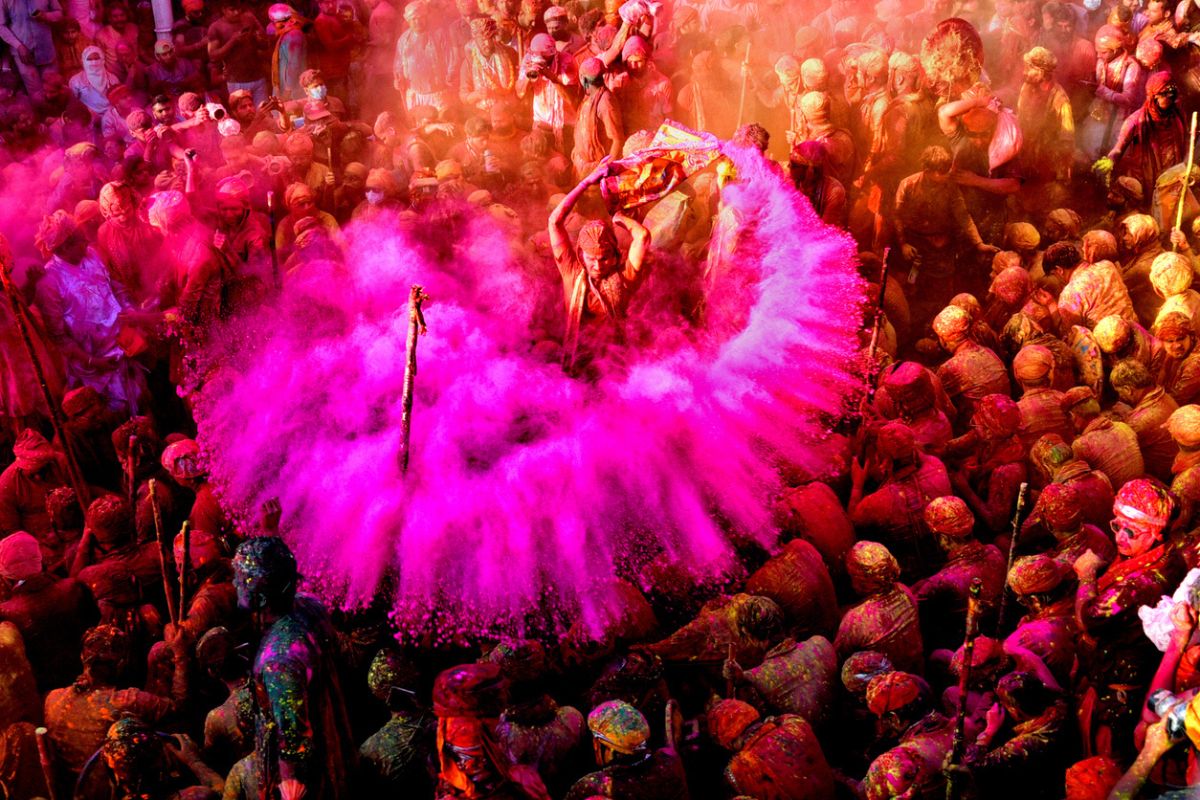
Unlike many festivals, Holi doesn’t have a fixed date on the Gregorian calendar. Instead, it falls on the full moon day (Purnima) in the Hindu month of Falgun, which typically translates to March.
In 2024, Holi will be on Monday, March 25th. The festivities, however, begin a day earlier on Sunday, March 24th with Holika Dahan, also known as Choti Holi.
Holi is primarily celebrated across North India, with major celebrations in Jaipur, Delhi, and Agra, but some parts of South India like Hampi in Karnataka also join in the festivities.
The Story Behind the Colors: Mythology and Tradition
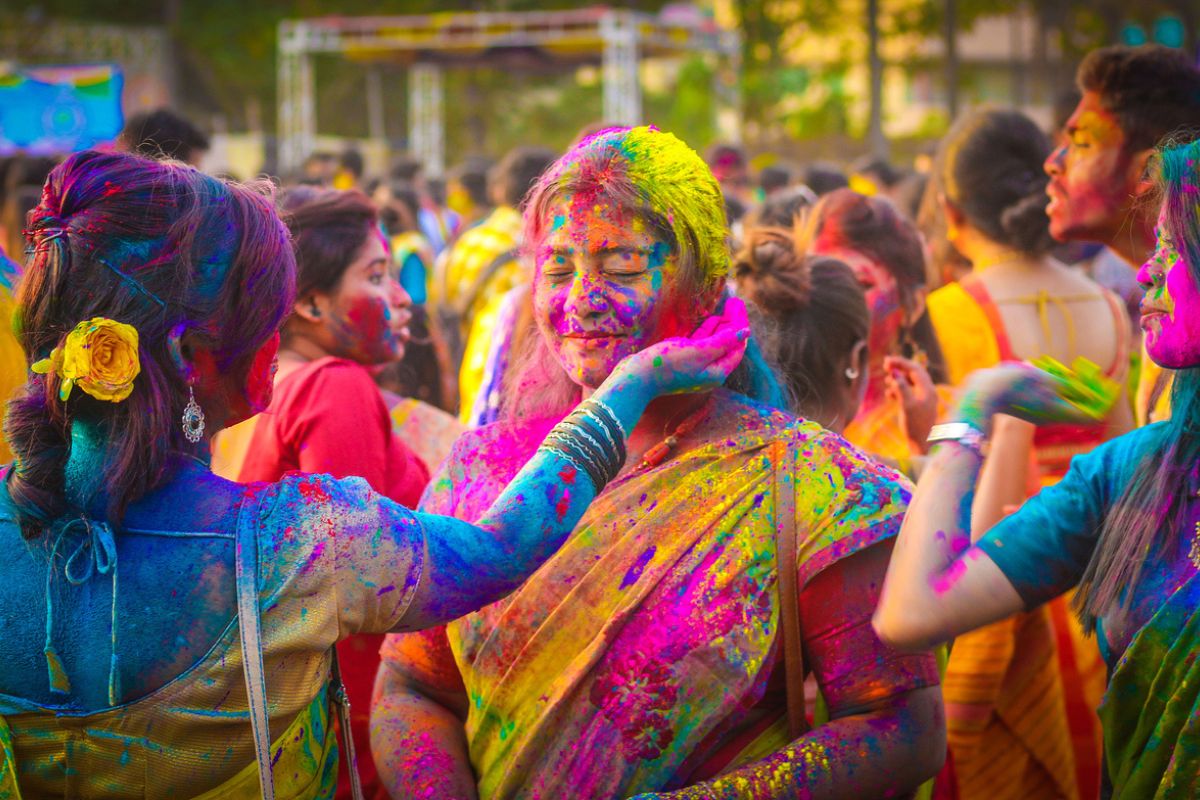
Holi’s vibrant colors and joyous spirit are deeply rooted in Hindu mythology.
According to the legend, Prahlad, a devout follower of Lord Vishnu, was saved from his evil father, Hiranyakashyap, by Lord Vishnu himself.
Hiranyakashyap’s sister, Holika, had a boon that made her fireproof. She attempted to use this power to burn Prahlad alive, but to everyone’s surprise, she was consumed by the flames herself, symbolizing the victory of good over evil.
This event is commemorated on the first day of Holi with Holika Dahan, the burning of a symbolic bonfire.
The Colorful Two-Day Celebration
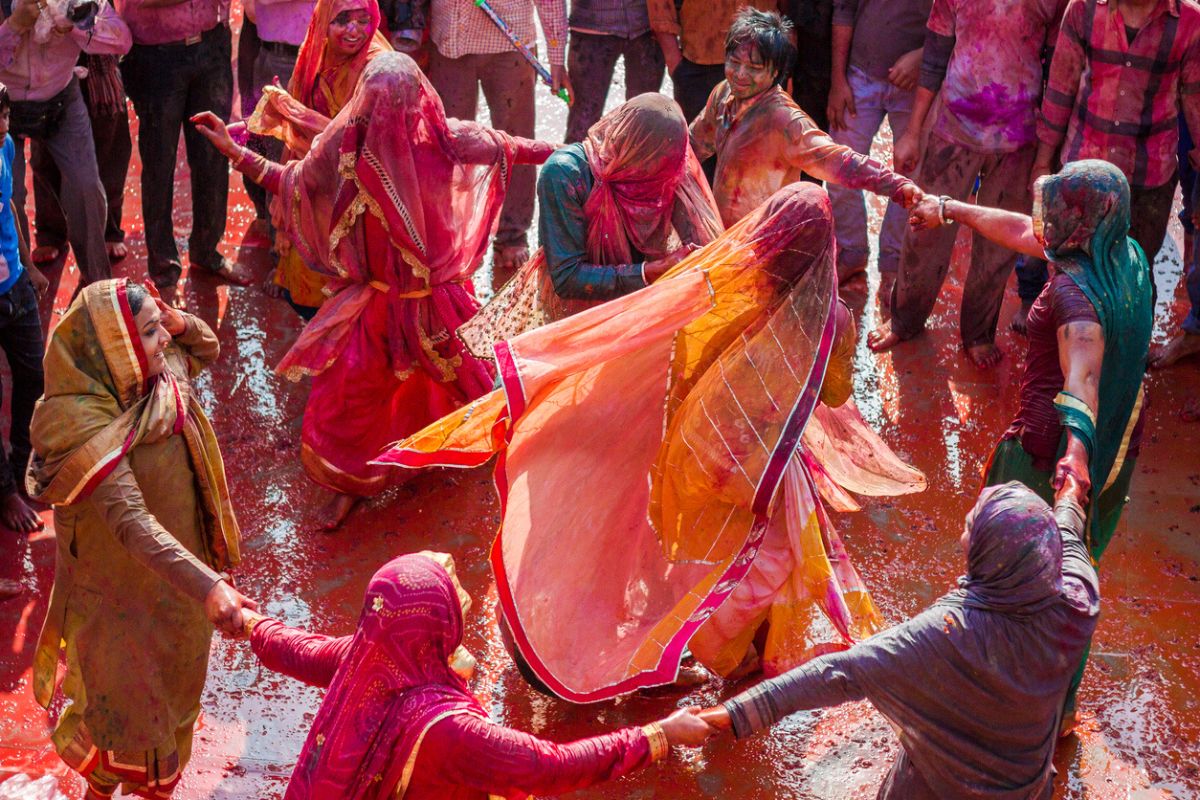
Holi is a two-day extravaganza, each day holding special significance:
Day 1: Holika Dahan (March 24th, 2024)
On the eve of Holi, people gather to light bonfires, symbolizing the burning of evil and negativity.
This is known as Holika Dahan or Chhoti Holi (small Holi). Prayers and rituals are performed around the bonfire, followed by feasting and merriment.
Day 2: Rangwali Holi (March 25th, 2024)
The second day, Rangwali Holi (festival of colors), is the most vibrant and boisterous part of the celebration.
People, young and old, come together to playfully throw colored powder (gulal) and water balloons at each other, creating a kaleidoscope of colors.
This signifies the end of winter, the arrival of spring, and the welcoming of new beginnings.
Beyond the Colors: A Celebration of Unity and Harmony
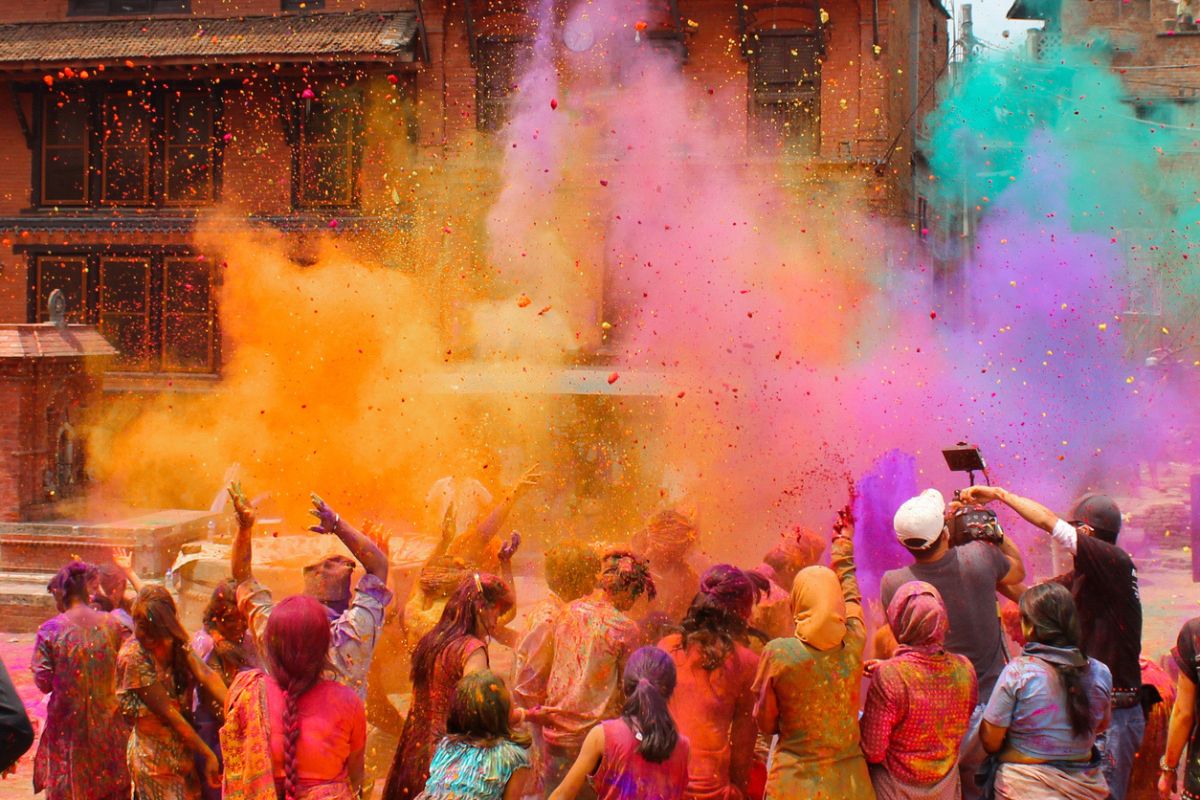
Holi transcends religious boundaries and fosters a sense of community and togetherness.
People from all walks of life come together, forgetting their differences and celebrating the spirit of love, forgiveness, and joy.
It’s a time for families and communities to come together, strengthen bonds, and celebrate life. Traditional sweets are exchanged, delicious food is enjoyed, and music and dance fill the air.
Experiencing Holi: Where to Go and What to Expect
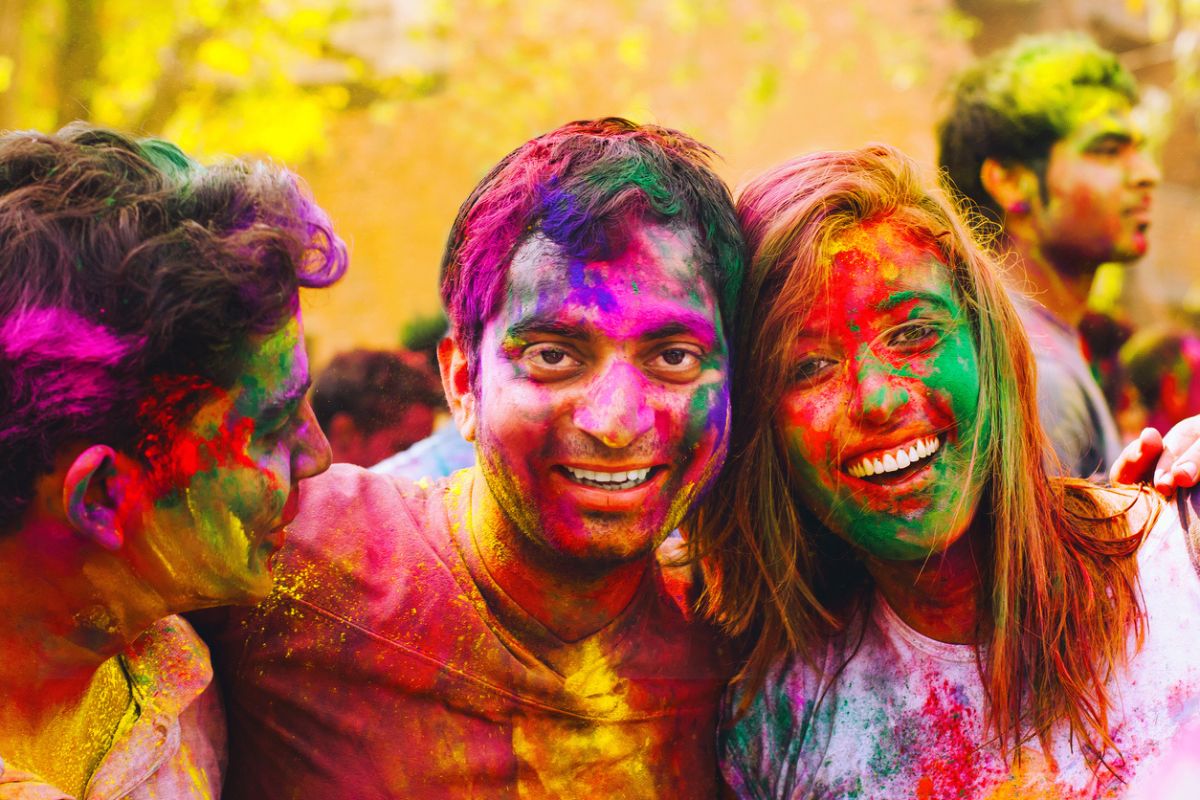
While Holi is celebrated throughout India, some regions are particularly famous for their unique traditions and vibrant celebrations.
Mathura, Vrindavan, Barsana, and Pushkar are popular destinations for tourists seeking an authentic Holi experience.
Whether you’re participating in the color play, indulging in delicious food, or simply witnessing the joyous spirit of the festival, Holi offers a unique and unforgettable cultural experience.
So, if you’re looking to eliminate negativity from your life in a colorful way, consider joining the celebrations of Holi!
Just remember to wear comfortable clothes you don’t mind getting stained, and be prepared to embrace the spirit of joy and community that defines this incredible festival.

